More than three hundred years ago, Benjamin Franklin began to capture lightning, opened up people's knowledge of lightning, but also opened up people's knowledge of electricity, from that time onwards, there are many people are considering how to capture the electricity for storage, so gradually the battery such a thing was created, indeed, as a very important invention in history, the emergence of the battery really solved a lot of problems, greatly improve the efficiency of life, and the emergence of lithium battery makes people's knowledge of electricity more and more in-depth, 18650 lithium battery is the oldest and still exists a lithium battery, in many areas can be seen in the 18650 lithium battery knowledge. The emergence of lithium batteries has made people's understanding of electricity more and more in-depth, 18650 lithium batteries are the longest-standing and still exist, in many areas can see the shadow of 18650 lithium batteries, because this battery compared to other batteries, the advantages are very obvious, and the safety is relatively speaking better, and even has been used in large equipment. It has even been used in large equipment, this article will introduce you to the 18650 battery knowledge.
A,the advantages of 18650 lithium battery
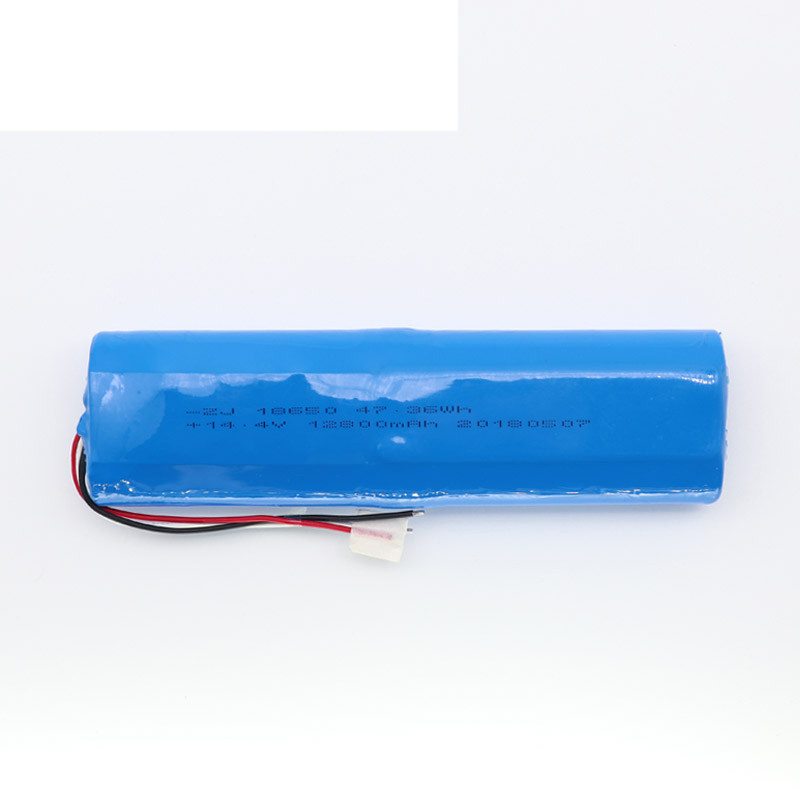
It is generally believed that the no-load voltage of lithium batteries is considered to be 3.0V or less when the electricity is used up (the specific value depends on the threshold value of the battery protection plate, for example, as low as 2.8V, there are also 3.2V). Most lithium batteries cannot be discharged to a no-load voltage below 3.2V, otherwise excessive discharge will damage the battery (generally lithium batteries on the market are basically used with a protection board, so excessive discharge will also result in the protection board not detecting the battery and thus not being able to charge the battery).
4.2V is the maximum limit of the battery charging voltage, generally speaking, the lithium battery no-load voltage charged to 4.2V is considered full of electricity, battery charging process, the battery voltage in 3.7V gradually rose to 4.2V, lithium battery charging can not be no-load voltage charged to more than 4.2V, otherwise it will also damage the battery, which is the special place of lithium batteries, in general, 18650 lithium batteries have The following advantages.
1,Wide range of use
Laptop computers, walkie-talkies, portable DVDs, instruments, audio equipment, models, toys, video cameras, digital cameras and other electronic equipment.
2,Series connection
Can be connected in series or parallel to form an 18650 lithium battery pack.
3,Low internal resistance
The internal resistance of polymer cells is smaller than that of liquid cells in general, and the internal resistance of domestic polymer cells can even be less than 35mΩ, which greatly reduces the battery's self-consumption and extends the standby time of mobile phones, and can completely reach the level of international standards. This kind of polymer lithium battery supporting large discharge current is ideal for remote control models, becoming the most promising alternative to NiMH batteries.
4,No memory effect
No need to empty the remaining power before charging, easy to use.
5,High voltage
The voltage of 18650 lithium battery is generally at 3.6V, 3.8V and 4.2V, much higher than the 1.2V of NiCd and NiMH batteries.
6,high safety performance
18650 lithium battery has high safety performance, no explosion, no combustion; non-toxic, non-pollution, certified by RoHS trademark; various safety performance in one go, cycle times greater than 500 times; good high temperature resistance, discharge efficiency of 100% under 65 degrees. To prevent the short-circuit phenomenon of the battery, the positive and negative poles of 18650 lithium battery are separated. So the possibility of short-circuiting has been reduced to the extreme. Protection plates can be added to avoid over-charging and over-discharging of the battery, which also extends the service life of the battery.
7,Long service life
The service life of 18650 lithium battery is very long, and the cycle life can be more than 500 times in normal use, which is more than twice as long as ordinary batteries.
8,Large capacity
18650 lithium battery capacity is generally 1200mah ~ 3600mah, while the general battery capacity is only about 800, if the combination of 18650 lithium battery into 18650 lithium battery pack, the 18650 lithium battery pack is casually can break through the 5000mah.
B,18650 lithium battery compared to polymer batteries
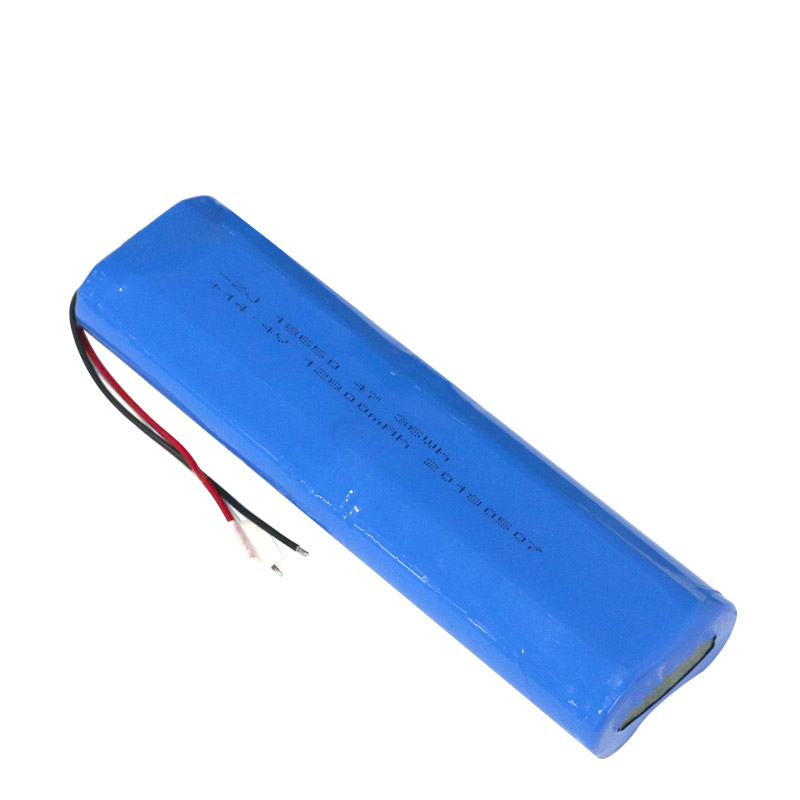
The so-called lithium polymer battery refers to the use of polymer as the electrolyte of lithium-ion batteries, specifically divided into "semi-polymer" and "full polymer" two. The "semi-polymer" refers to a layer of polymer (usually PVDF) on top of the barrier film, which makes the cell more adhesive and the battery more rigid, while the electrolyte is still a liquid electrolyte. All-polymer" refers to the use of a polymer to form a gel network inside the cell, which is then injected into the electrolyte to form the electrolyte. Although "all polymer" batteries still use a liquid electrolyte, the amount used is much less, which is a huge improvement in the safety of lithium-ion batteries. As far as I know, only SONY is now mass-producing "all-polymer" lithium-ion batteries.
On the other hand, a polymer battery is a lithium-ion battery that uses an aluminium-plastic packaging film as its outer packaging, which is commonly known as a soft pack battery. The film is made up of three layers, PP, Al and nylon, and because PP and nylon are polymers, the cells are called polymer batteries.
1,Lower price
The international price of 18650 is about 1USD/pcs, which is about 3RMB/Ah according to 2Ah, while the price of polymer lithium battery is 4RMB/Ah for low-end cottage factory, 5~7RMB/Ah for mid-end, and more than 7RMB/Ah for mid-end.
2,Not customizable
SONY has always wanted to make lithium-ion batteries like alkaline batteries, with certain industrial standards, just like No. 5 batteries and No. 7 batteries, which are basically the same all over the world. However, as one of the major advantages of lithium-ion batteries is that they can be designed according to customer needs, it is impossible to have a uniform standard.
3,Poor safety
We know that under extreme conditions (e.g. overcharging, high temperature, etc.), the lithium-ion battery will undergo a violent chemical reaction and produce a large amount of gas. 18650 batteries use a metal shell, which has a certain strength, and when the internal air pressure reaches a certain point the steel shell will break and explode, resulting in a horrible safety accident.
This is why the rooms where 18650 batteries are tested must generally be protected by layers and absolutely no one should be allowed in during the test. Polymer batteries do not have this problem, even in the same extreme situation, due to the lower strength of the packaging film, they will break at a slightly higher air pressure and will not explode, or in the worst case scenario, burn. So in terms of safety, polymer batteries are better than 18650 batteries.
4,Low energy density
General 18650 battery capacity can be about 2200mAh, so the energy density is about 500Wh/L, while the energy density of polymer battery can be close to 600Wh/L at this stage of mass production.
However, polymer batteries have their own drawbacks. The main one is the higher cost, which has to be factored into the R&D costs, as they can be designed according to customer requirements. Moreover, the variety of shapes and types leads to a variety of non-standard fixtures in the manufacturing process, which also increases costs accordingly. The poor versatility of the polymer battery itself is also brought about by the flexible design, which often requires a new design for the customer for so 1mm difference.
C,the application of 18650 lithium battery

In the energy battery industry lithium secondary batteries are used thanks to their superior performance. With the continuous development of lithium secondary battery technology, has been widely used in our daily life; rechargeable batteries for multiple uses are increasingly favored by consumers. Focus on the energy battery industry, a full understanding of the battery so that we can do "for my use", the current 18650 lithium battery in the following areas have certain applications.
1,Energy storage
Mainly used in base station power supply, clean energy storage, power grid storage, home light storage system, etc.
2,Power class
Mainly refers to electric vehicles, electric bicycles, new energy vehicles, etc.
3,Digital
Mobile phones, tablets, laptops, electric toys, MP3/MP4, headphones, rechargeable batteries, models, mobile power, etc.
D,18650 lithium battery classification

18650 lithium battery production are required to have a protective circuit to prevent the battery from being overcharged and overdischarged. Of course, this is necessary for lithium batteries, which is also a general disadvantage of lithium batteries, because the materials used in lithium batteries are basically lithium cobaltate material, and lithium cobaltate material lithium batteries can not be discharged at high current, poor safety, from the classification of 18650 lithium batteries can be classified in the following way
1,Classification according to the practical performance of the battery
Power type battery and energy type battery. Energy type battery is characterized by high energy density, mainly used for high energy output; power type battery is characterized by high power density, mainly used for instantaneous high power output, output battery. The power-energy lithium battery is accompanied by the emergence of plug-in hybrid vehicles. It requires higher energy stored in the battery to support pure electric driving for a certain distance, and also has to have better power characteristics to enter hybrid mode at low power levels.
Simple understanding, energy type is similar to a marathon runner, to have endurance, is to require high capacity, the high current discharge performance requirements are not high; then the power type is a sprinter, the fight is burst power, but endurance should also have, otherwise the capacity is too small will not run far.
2,By electrolyte material
Lithium-ion batteries are divided into liquid lithium-ion batteries (LIB) and polymer lithium-ion batteries (PLB).
Liquid lithium-ion batteries use a liquid electrolyte (most of the current power batteries are of this type). Polymer Li-ion batteries are replaced by a solid polymer electrolyte, which can be either 'dry' or 'gel', with most currently using polymer gel electrolytes. In terms of solid-state batteries, the electrodes and electrolyte are strictly solid.
3,Classification by product appearance
Cylindrical, soft pack, square.
Cylindrical and square outer packaging is mostly steel or aluminium shell. Soft pack outer packaging is aluminium plastic film, in fact, soft pack is also a kind of square, the market is used to the aluminium plastic film packaging called soft pack, some people will also be soft pack batteries called polymer batteries.
For cylindrical lithium-ion batteries, the model number is usually 5 digits. The first two digits are the diameter of the battery and the middle two digits are the height of the battery. The unit is millimetre. For example, 18650 lithium battery, it has a diameter of 18 mm and a height of 65 mm.
4,according to the classification of the pole material
Positive electrode material: lithium iron phosphate (LFP), lithium cobalt acid (LCO), lithium manganate (LMO), (binary battery: lithium nickel manganate / lithium nickel cobalt acid), (ternary: lithium nickel cobalt manganate (NCM), lithium nickel cobalt aluminum acid (NCA)).
Negative materials: lithium titanate (LTO), graphene batteries, nano carbon fibre batteries.
Regarding the graphene concept in the market, it mainly refers to graphene-based batteries, i.e. graphene slurry in the pole piece or graphene coating on the diaphragm. Lithium nickel-acid and magnesium-based batteries are basically non-existent in the market.
E,Charge and discharge of 18650 lithium battery
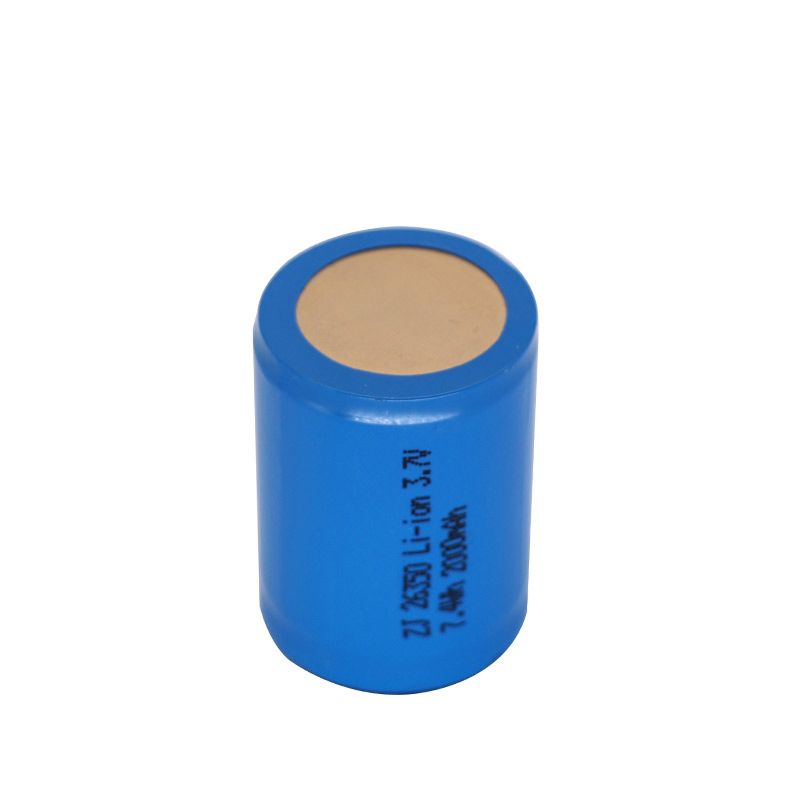
According to industrial standards, for lithium batteries, the general nominal capacity is the minimum capacity, this capacity is a batch of batteries, in 25 degrees at room temperature, first filled with cc/cv0.5c and left for a period of time (generally 12 hours). Discharge to 3.0v with a constant current of 0.2c (there is also a standard of 2.75v, but the effect is not significant, 3v to 2.75v drops quickly without much capacity), the capacity value released, as a batch of batteries must have individual differences, the actual discharge capacity of the battery with the lowest capacity value. That is to say, the actual capacity of any one battery in the batch should be greater than or equal to the nominal capacity.
1,The charging process of 18650 lithium battery
Some chargers use cheap solutions to achieve this, which are not good enough in terms of control accuracy and can easily cause abnormal battery charging and even damage to the battery. When choosing a charger try to choose a big brand 18650 lithium-ion battery charger, quality and after-sales service is guaranteed to extend the life of the battery. Brand guarantee 18650 lithium-ion battery charger has four protection: short-circuit protection, over-current protection, over-voltage protection, battery reversal protection function, etc. Overcharge protection: When the charger overcharges the lithium-ion battery, the charging state needs to be terminated in order to prevent the internal pressure from rising due to the temperature rise.
To do this, the protection device needs to monitor the battery voltage and when it reaches the battery overcharge voltage, the overcharge protection function is activated and charging is aborted. Over-discharge protection: To prevent the over-discharge state of the Li-ion battery, the over-discharge protection is activated when the Li-ion battery voltage falls below its over-discharge voltage detection point, aborting discharge and keeping the battery in standby mode with a low quiescent current. Over-current and short-circuit protection: The protection device activates over-current protection when the lithium-ion battery discharge current is too high or when a short-circuit situation arises.
The Li-Ion battery charging control is divided into two phases. The first phase is constant current charging, where the charger charges at a constant current when the battery voltage is below 4.2V. The second stage is the constant voltage charging stage. When the battery voltage reaches 4.2V, the charger will fix the voltage at 4.2V due to the characteristics of Li-ion batteries, if the voltage is any higher, it will be damaged, the charging current will gradually decrease, when the current decreases to a certain value (usually when 1/10 of the set current), the charging circuit will be cut off and the charging completion indicator will light up, charging is complete.
Overcharging and discharging lithium ion batteries can cause permanent damage to the positive and negative electrodes. Over discharging leads to the collapse of the negative carbon layer structure, and the collapse will cause the lithium ion can not be inserted during the charging process; over charging makes too much lithium ion embedded in the negative carbon structure, and cause some of the lithium ion can no longer be released.
2,The charging principle of 18650 lithium battery
The working principle of lithium-ion battery is its charging and discharging principle. When charging the battery, lithium ions are generated at the positive electrode of the battery, and the generated lithium ions move through the electrolyte to the negative electrode. The carbon used as the negative electrode is in a laminar structure with many micro-pores, and the lithium ions that reach the negative electrode are embedded in the micro-pores of the carbon layer, the more lithium ions are embedded, the higher the charging capacity.
By the same token, when the battery is discharged (i.e. when we use it), the lithium ions embedded in the carbon layer of the negative electrode are released and move back to the positive electrode. The more lithium ions that return to the positive electrode, the higher the discharge capacity. When we talk about battery capacity, we are referring to the discharge capacity.
It is easy to see that during the charging and discharging process of a lithium ion battery, the lithium ions are in a state of motion from the positive terminal → the negative terminal → the positive terminal. If we compare a lithium-ion battery to a rocking chair, the two ends of the rocking chair are the two poles of the battery, and the lithium ions are like good sportsmen running back and forth between the two ends of the rocking chair. Therefore, experts have given lithium-ion batteries a lovely name rocking chair battery.
F,18650 lithium battery why there is a history of explosions
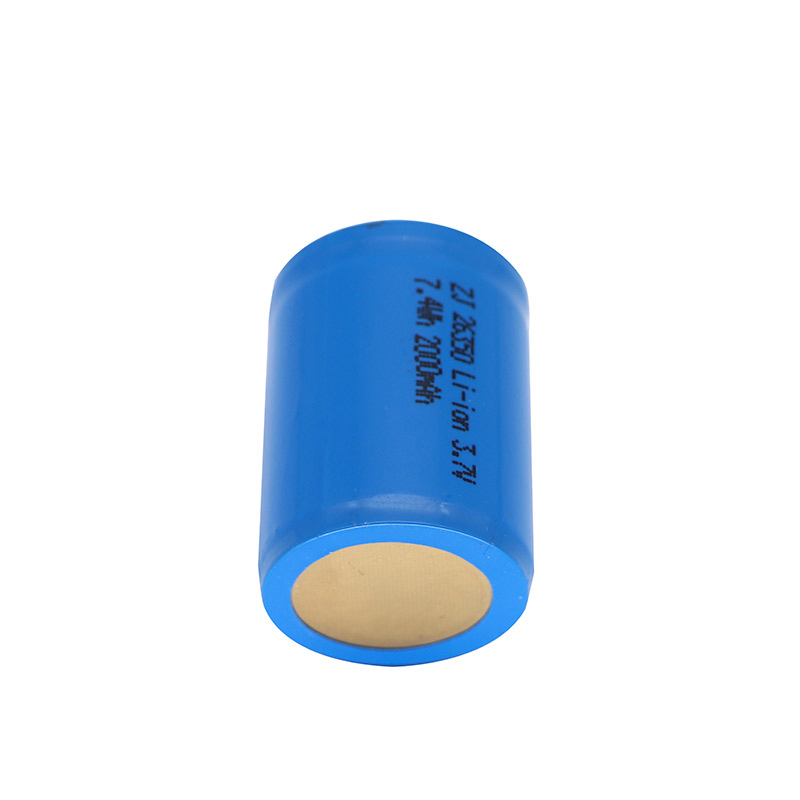
The vast majority of 18650 batteries use steel-cased packaging, the quality of the battery is not good because there is no protection, in the case of overcharging (overcharge), it will make its internal pressure suddenly increased, when more than the bear value, it will explode. Problems such as short-circuiting, excessive temperature or the battery being crushed and deformed or even punctured can all cause the battery to explode.
After 30 years of development, the 18650 battery preparation process has become very mature, and in addition to a great improvement in performance, its safety is also very well established. To avoid explosion in the sealed metal casing, 18650 batteries are now equipped with a safety valve at the top, which is standard in every 18650 battery and is the most important explosion-proof barrier.
When the pressure inside the battery is too high, the top safety valve will open to relieve the pressure and prevent an explosion. However, when the safety valve is open, the chemicals leaking out of the battery will react with the oxygen in the air under high temperature conditions and a fire may still occur. In addition, some 18650 batteries now come with their own protection plate, with overcharge and overdischarge and short-circuit protection, so the safety performance is very high.
The previous mobile power explosions were all caused by unscrupulous manufacturers using unqualified and poor quality 18650 batteries to save costs, or even second-hand waste electricity. At present, the 18650 batteries produced by major battery manufacturers such as Panasonic, Sony, Samsung and so on are actually very safe, and the usage rate of 18650 batteries is very high, we can do the correct use in daily use and avoid short circuiting, damage or high temperature of the battery, there is no need to worry about the battery exploding. We can't just turn over a boat of people with a bamboo pole and qualify the safety of 18650 with individual poor quality products.
G,Summary
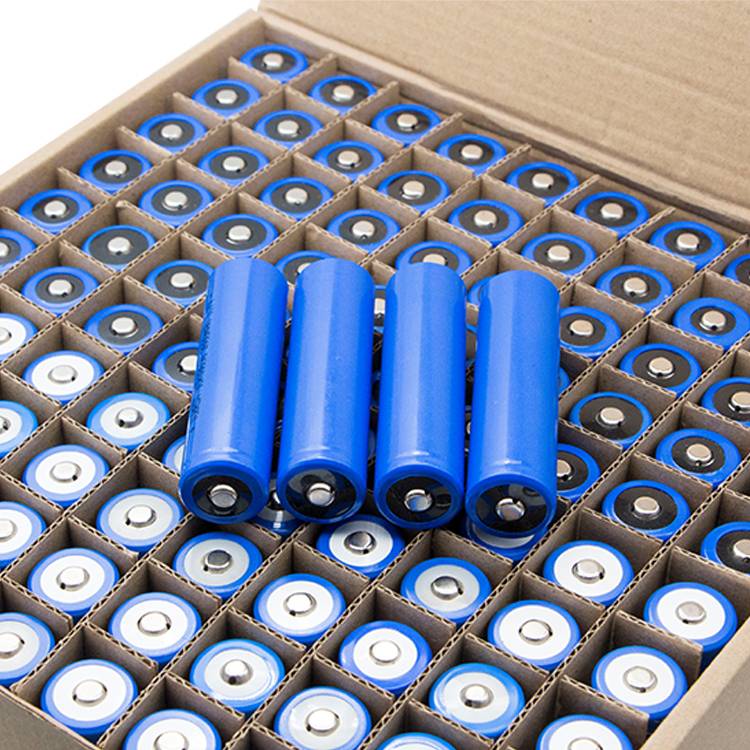
In fact, for lithium batteries, the reason for the explosion is understandable, after all, in the past, the grasp of this stability will not be so powerful, but 18650 as a very high performance contrast lithium batteries, its application will certainly become more and more widespread, after all, for this indispensable battery, 18650 lithium battery is the best one to choose.


































 401,Building A1,No.168,Changshan IndustrialZone Liulian Community,Pingdi Street,Shenzhen Guangdong Province,China
401,Building A1,No.168,Changshan IndustrialZone Liulian Community,Pingdi Street,Shenzhen Guangdong Province,China